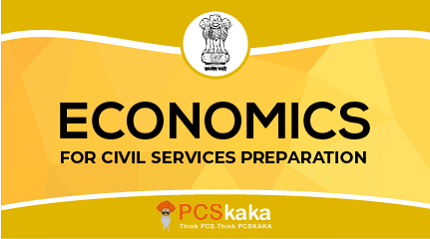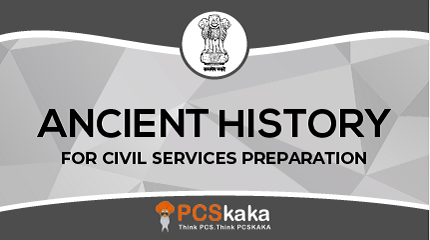

61. Consider the following statements and select your answer from the codes given below: 1. The Governor does not have the power to appoint the judge of a State High Court. 2. He is not a part of the Legislature. 3. He has the power to nominate some members in the Legislative Council. 4. He has no judicial powers. Codes:
1 and 2 are correct.
1 and 3 are correct.
2 and 4 are correct.
All are correct.
62. Which one of the following Fundamental Rights was amended as a result of the decision of the Supreme Court of India in ‘State of Madras Vs. Champakam Dorairajan’ case:
Right to equality before law
Right against discrimination
Right against untouchability
Right to freedom of speech and expression
63. Which of the following was not added to the Directive Principles by the 42nd Amendment of the Constitution?
Protection of children and youth from exploitation
Equal justice and free legal aid
Uniform civil code
Participation of workers in the management of industries
64. ‘Equal Pay for Equal Work’ has been ensured in the Indian Constitution as one of the:
Fundamental Rights
Directive Principles of State Policy
Fundamental Duties
Economic Rights
65. The concept of ‘the Directive Principles of State Policy’ in the Indian Constitution has been adopted from the Constitution of:
France
Ireland
Japan
U.S.S.R.
66. “It shall be the duty of every citizen of India to protect and improve the natural environment.” The above statement refers to which of the following Articles of the Constitution of India?
Article 21
Article 48-A
Article 51-A
Article 56
67. Which of the following have been recognised as fundamental rights by the Supreme Court of India? 1. Right to shelter 2. Right to travel abroad 3. Right to equal pay for equal work Select the correct answer from the codes given below: Codes:
1 and 2
2 and 3
1 and 3
1, 2 and 3
68. Which of the following enabled the Supreme Court of India to deduce a fundamental right to equal pay for equal work?
The word ‘socialist’ used in the preamble of the Constitution
(a) read with Article 14 of the Constitution
(a) read with Article 16 of the Constitution
(a), (b) and (c) all read together
69. Which one of the following Articles of the Indian Constitution puts absolute limitation on the legislative power?
Article 14
Article 15
Article 16
Article 17
70. The main object of Article 13 of the Indian Constitution is to secure the paramountcy of the Constitution in regard to:
Directive Principles of State Policy
Fundamental Rights
Fundamental Duties
All of the above
71. Which one of following Articles of the Indian Constitution belongs to a different category?
Art. 14
Art. 15
Art. 16
Art. 19
72. Which of the following Articles read with the word ‘Socialist’ used in the Preamble of the Indian Constitution enabled the Supreme Court to deduce a fundamental right to equal pay for equal work?
Article 14
Articles 14 and 15
Articles 14, 15 and 16
Articles 14 and 16
73. Match List–I with List–II and select the correct answer using the codes given below: List–I List–II (Articles of the (Subject matter) Constitution) A. Art. 40 1. Organisation of Village Panchayat B. Art. 41 2. Right to work C. Art. 44 3. Uniform Civil Code D. Art. 48 4. Organisation of agriculture and animal husbandry Codes: A B C D
1 2 3 4
2 3 1 4
1 3 4 2
3 2 4 1
74. Which one of the following is not a fundamental right?
Right to Freedom
Right to Equality
Right to Property
Right against Exploitation
75. The Constitution of India does not clearly provide for the “Freedom of Press” but this freedom is implicit in the Article:
19 (i) a
19 (i) b
19 (i) c
19 (i) d
76. A writ issued by the judiciary enjoining upon the executive to do what it should have done within its stipulated powers is called:
Habeas Corpus
Mandamus
Prohibition
Quo-warranto
77. Under the provisions of Right to Freedom of Religion are included: (I) Right to propagate religion (II) Right of the Sikhs to wear and carry ‘kirpans’ (III) Right of the State to legislate for social reforms (IV) Right of religious bodies to secure conversion of people to their own faithSelect the correct answer from the code given below: Codes:
I, II, and III
II, III and IV
III and IV
All of the above
78. Which provision of the Fundamental Rights is directly related to the exploitation of children?
Article 17
Article 19
Article 23
Article 24
79. Which provision of the Fundamental Rights is directly related to the exploitation of children?
Art. 17
Art. 19
Art. 23
Art. 24
80. Right to Education to all children between the ages of 6 to 14 years is
included in the Directive Principles of State Policy
a Fundamental Right
a Statutory Right
None of these

12 Total Test
360 Total Question
Scientifically designed for PCS
A must have for Civil services aspirant
IAS PCS SCC and others

75 Total Test
2250 Total Question
Scientifically designed for PCS
A must have for Civil services aspirant
IAS PCS SCC and others

69 Total Test
2070 Total Question
Scientifically designed for PCS
A must have for Civil services aspirant
Timer for time management